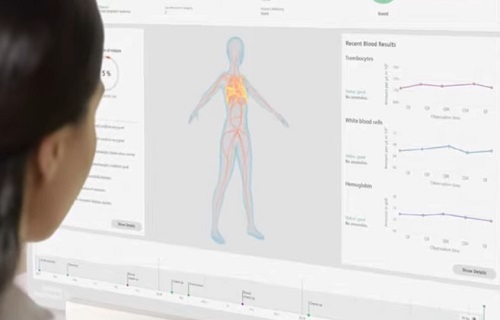What is Churg-Strauss Syndrome?
Churg-Strauss Syndrome, also known as Eosinophilic Granulomatosis with Polyangiitis (EGPA), is a rare autoimmune condition that causes inflammation of blood vessels (vasculitis). This inflammation can restrict blood flow and damage organs and tissues.
- Asthma and allergies: Often the first symptoms.
- High levels of eosinophils: Type of white blood cell that can cause tissue damage.
- Organ involvement: It can affect the lungs, skin, heart, nerves and other organs.
Numbers Related Churg-Strauss Syndrome
General Statistics:
- Prevalence:
- EGPA is a rare disease affecting about 10–15 people per million annually worldwide.
- It is more common in people aged 30 to 60 years however it can occur at any age.
- Gender Distribution:
- Affects men and women equally but though some studies suggest a slight male predominance.
- Asthma Association:
- Nearly 100% of patients with EGPA have asthma, often severe or late-onset.
- Asthma typically develops months to years before vasculitis symptoms.
- Eosinophil Levels:
- Normal eosinophil levels in blood are 0–500 cells/μL, but in EGPA, levels often exceed 1,500 cells/μL or account for more than 10% of the total white blood cells.
Outcomes and Prognosis:
- Survival Rate:
- With treatment 5-year survival rate is around 90%. Without treatment, severe organ involvement could cause to life-threatening complications.
- Organ Involvement:
- Lungs are affected in over 90% of cases.
- Peripheral nerves are involved in about 70% of cases, cause to neuropathy.
- Heart involvement occurs in 30–50% of patients, and it is a major cause of mortality.
Treatment and Management:
- Medication Use:
- About 50–70% of patients require long-term corticosteroids.
- Up to 50% of patients need additional immunosuppressive therapies, such as azathioprine, cyclophosphamide or biologics like mepolizumab.
Rare Features:
- Kidney Involvement:
- Uncommon compared to other vasculitides, occurring in about 25% of cases.
- Relapse Rate:
- Relapses occur in about 30–50% of patients, often necessitating ongoing monitoring and treatment adjustments.



What are the Symptoms of Churg-Strauss Syndrome?
Churg-Strauss Syndrome (Eosinophilic Granulomatosis with Polyangiitis, EGPA) has three main stages each with distinct symptoms. But not everyone experiences all stages and symptoms can overlap. Common symptoms associated with the condition are:
1. Allergic Phase
- Asthma: A key symptom, often severe or newly developed in adults.
- Allergic rhinitis: Chronic nasal congestion, sneezing and sinusitis.
- Nasal polyps: Growths in the nasal passages causing blockages.
2. Eosinophilic Phase
- Eosinophilia: High levels of eosinophils in the blood or tissues, cause to:
- Lung problems (e.g. pneumonia-like symptoms).
- Gastrointestinal issues (e.g. abdominal pain, diarrhea).
- Skin rashes or nodules.
3. Vasculitic Phase
- Inflammation of small to medium blood vessels (vasculitis), cause to:
- Peripheral neuropathy: Tingling, numbness or weakness in hands or feet.
- Skin lesions: Bruising, rashes or ulcers.
- Heart issues: Heart inflammation or damage.
- Kidney problems: Rare but possible.
- General symptoms: Fatigue, fever and weight loss.
Other Possible Symptoms:
- Joint pain or muscle aches.
- Coughing, wheezing or shortness of breath.
- Severe cases may involve life-threatening complications affecting the heart or nervous system.
What are the Early Signs of Churg-Strauss Syndrome?
Early signs of Churg-Strauss Syndrome (Eosinophilic Granulomatosis with Polyangiitis, EGPA) often mimic common allergic or respiratory conditions so making them easy to overlook. But recognizing these symptoms early can be very helpful for diagnosis and treatment.
Key Early Signs:
- Asthma:
- Often the first and most common symptom.
- May develop in adulthood, even if the person has never had asthma before.
- Typically worsens over time and can be severe.
- Allergic Symptoms:
- Chronic nasal congestion or sinus infections.
- Allergic rhinitis (sneezing, runny nose, itchy eyes).
- Nasal polyps, which may cause nasal blockage.
- Fatigue and Weakness:
- General feelings of being unwell or overly tired.
- High Eosinophil Count:
- Detected in blood tests, often without immediate symptoms.
- Eosinophils are white blood cells involved in allergic responses and tissue inflammation.
- Respiratory Symptoms:
- Persistent cough.
- Shortness of breath, especially at night or after physical activity.
- Gastrointestinal Issues (in some cases):
- Abdominal pain.
- Diarrhea or vomiting due to inflammation in the digestive tract.
When to Seek Medical Attention:
If someone with a history of asthma or allergies starts experiencing worsening symptoms, like tingling or weakness or unexplained systemic symptoms like fatigue or weight loss, it’s recommended to consult a doctor. Blood test showing elevated eosinophil levels can be an early clue for further investigation.
What are the Phases of Churg-Strauss Syndrome?
1. Allergic Phase
- Key Features:
- Asthma: Often severe and persistent, this is usually the first symptom to appear and can develop in adulthood.
- Allergic rhinitis: Chronic nasal congestion, sneezing and sinus infections.
- Nasal polyps: Growths in the nasal passages causing blockage.
- Description:
This phase is characterized by heightened allergic reactions and is often the precursor to more systemic symptoms. It could last for years before progressing to the next phase.
2. Eosinophilic Phase
- Key Features:
- High eosinophil count: Elevated levels of eosinophils (a type of white blood cell) in the blood or tissues.
- Lung involvement: Pneumonia-like symptoms, like cough, shortness of breath or wheezing.
- Gastrointestinal symptoms: Abdominal pain, diarrhea, nausea or vomiting caused by inflammation in the digestive tract.
- Skin problems: Rashes or small lumps.
- Description:
Eosinophils build up in tissues and organs, lead to inflammation and damage. This phase can cause to significant organ involvement, particularly in the lungs and gastrointestinal tract.
3. Vasculitic Phase
- Key Features:
- Vasculitis: Inflammation of small to medium blood vessels, cause to reduced blood flow and potential tissue damage.
- Peripheral neuropathy: Numbness, tingling or weakness in hands and feet due to nerve damage.
- Skin lesions: Bruises, ulcers or red spots from blood vessel inflammation.
- Heart issues: Inflammation, heart failure or other cardiac complications in severe cases.
- General symptoms: Fever, weight loss, fatigue and muscle/joint pain.
- Description:
This phase is the most serious, as it involves systemic vasculitis, which can affect multiple organs, including the heart, kidneys and nervous system. It is the stage where life-threatening complications are most likely to occur.



What are the Treatment Options of Churg-Strauss Syndrome?
Treatment for Churg-Strauss Syndrome (Eosinophilic Granulomatosis with Polyangiitis, EGPA) focuses on control inflammation, reduce immune system activity and preventing organ damage. The approach could change according to the severity of the disease and the organs involved.
1. Corticosteroids
- First-line treatment for all stages of EGPA.
- Commonly used drug: Prednisone.
- Dosage starts high and is gradually tapered to the lowest effective dose.
- Helps reduce inflammation and eosinophil levels.
2. Immunosuppressive Medications
- Used for patients with more severe disease or organ involvement.
- Common options:
- Cyclophosphamide: Effective for severe cases (e.g., heart or kidney involvement).
- Azathioprine or Methotrexate: Maintenance therapy to reduce steroid dependence.
- Mycophenolate mofetil: Sometimes used as an alternative.
3. Biologic Therapies
- Target specific immune pathways involved in EGPA.
- Mepolizumab: A biologic that blocks interleukin-5 (IL-5), reducing eosinophil levels. Approved specifically for EGPA.
- Other biologics, such as Rituximab, could be used in some cases, though they are not yet standard for EGPA.
4. Other Supportive Medications
- Aspirin or anticoagulants: To prevent blood clots in patients with vasculitis.
- Medications for asthma and allergies: Inhalers or antihistamines to manage symptoms.
- Cardiac or nerve-specific medications: To address complications affecting the heart or peripheral nerves.
5. Plasma Exchange (Plasmapheresis)
- Rarely used but may be considered in life-threatening cases, like as severe kidney or lung involvement.
Treatment Goals:
- Induce remission: Control active inflammation and symptoms.
- Maintain remission: Prevent relapse with lower doses of steroids and immunosuppressants.
- Protect organs: Minimize damage to vital organs like the heart, lungs or nerves.
Long-term Management:
- Regular follow-ups with a rheumatologist, pulmonologist or other specialists depending on organ involvement.
- Monitoring for side effects of medications, such as osteoporosis, infections or liver damage.
- Lifestyle changes besides supportive therapies (e.g., physical therapy for nerve damage).
Advice For Living With Churg-Strauss Syndrome
1. Follow Your Treatment Plan
- Take prescribed medications consistently such ascorticosteroids and immunosuppressants.
- Attend all follow-up appointments with your doctors.
- Communicate with your doctor about any side effects or changes in symptoms.
2. Monitor Your Symptoms
- Keep track of your symptoms in a journal or app, especially asthma severity, fatigue and any new signs such as numbness or skin changes.
- Report any unusual or worsening symptoms to your doctor immediately, as they may signal a flare-up.
3. Adopt a Healthy Lifestyle
- Eat a balanced diet: Focus on anti-inflammatory foods like fruits, vegetables, whole grains and lean protein. Limit processed foods, sugar and salt, especially if on corticosteroids.
- Stay active: Engage in gentle exercises, like walking or yoga, to improve stamina and reduce stress unless otherwise advised by your doctor.
- Avoid smoking: It worsens respiratory symptoms and overall health.
4. Protect Against Infections
- Corticosteroids and immunosuppressants weaken your immune system so:
- Stay up-to-date on vaccinations (consult your doctor about which are safe).
- Practice good hygiene and avoid contact with sick people.
5. Manage Stress
- Chronic stress can worsen symptoms or trigger flares.
- Practice relaxation techniques like meditation, deep breathing or mindfulness.
- Seek support through counseling or support groups for emotional health.
6. Adapt Your Environment
- Minimize exposure to allergens or triggers that worsen asthma or sinus symptoms, like as dust, smoke or other strong fragrances.
- Use air purifiers and keep your living space clean.
We wish healthy lift to you.

